|
While the George V Issues were in
use, post offices existed at Aola, Gizo, Shortland
Islands, Tulagi, and Vanikoro. At this time,
the Protectorate still possessed almost no roads, and the
settlements were small by the standards of the rest of the
world. Almost all mail was delivered by sea. The information
on the post offices and cancellations below is taken from Gisburn,
Vernon, Hinchcliffe,
and the South Pacific Handbook. |
|
|
|
|
|
|
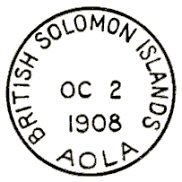
Diameter
= 28 mm
Until
May 5, 1914
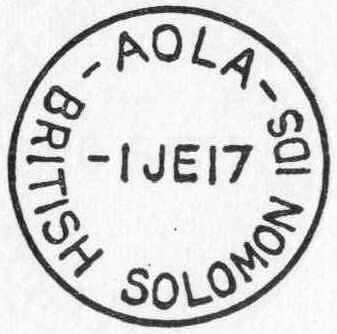
Diameter
= 29 mm October
12, 1916 to March 8, 1918 |
Aola,
37 miles east of Honiara, the current capitol of the
Solomon Islands, was the capitol of Guadalcanal prior to World
War II. Charles Woodford lived on Mbara Island, just
off the coast of Aola in 1885 and 1886. A post office
was opened there in 1908.
Gisburn states that the
office at Aola closed in 1912 and reopened from October
1916 until January 1919. Vernon,
however, reports that the office did not first close until
1914. According to Hinchcliffe,
no other markings were in use at Aola.
|
|
|
|
|
|
|
Gizo,
on the island of the same name, is in the New Georgia Group.
It has been the administrative center of the Western Solomons
since 1899, and is now the country's second largest city ,
behind Honiara. A post office was opened there in
January 1908. |
|
|
|
|
|
|
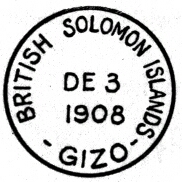
Diameter
= 25 mm
January
6, 1908 to 1923 |
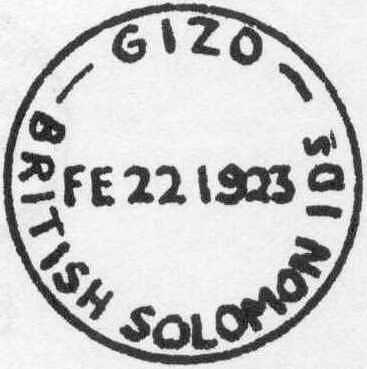
Diameter
= 30 mm
1922
to May 1, 1929 |
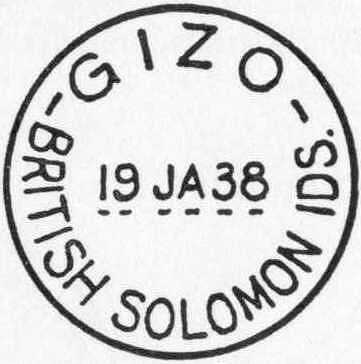
Diameter
= 30 mm
1928
to January 1942 |
|
|
|
|
|
|
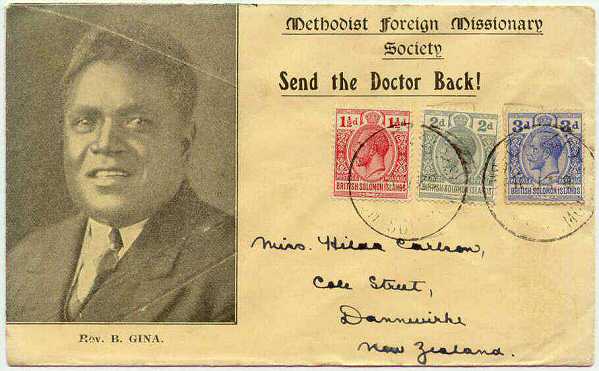 |
|
|
|
|
|
| In addition to
the marks shown above and at right, Vernon
reports that a device similar to the one on the 5d
from Tulagi shown below, but without the
"lazy 8's", was used from September 18, 1915
to November 21, 1917. Its diameter was 27 mm. As can be
seen on the Silver Jubilee FDC shown below, the mark
shown at above right also exists without the date
underlining. |
 |
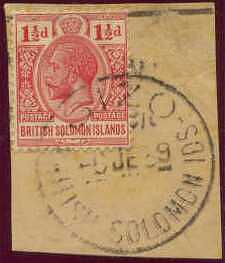 |
|
|
|
|
|
|
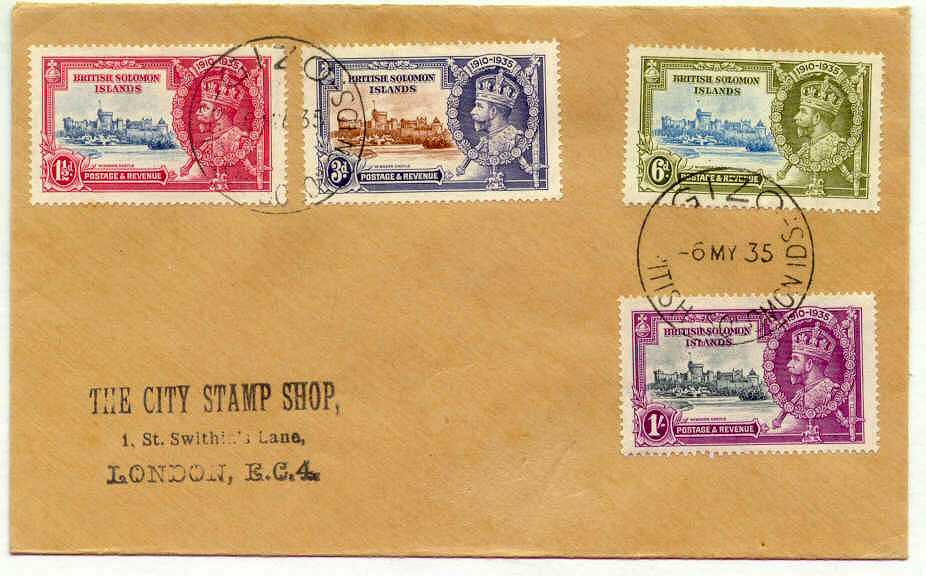 |
|
|
|
|
|
Hinchcliffe lists three different registration
labels plus one handstamp as being in use at Gizo during the
span of the George V issues. He also notes a manual
registration mark from September 5, 1921. Also, collectors
should beware of the Madame
Joseph forgery of a Gizo mark. |
|
|
|
|
|
|
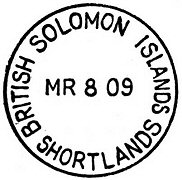
Diameter
= ~ 30 mm
Until
August 13, 1914
|
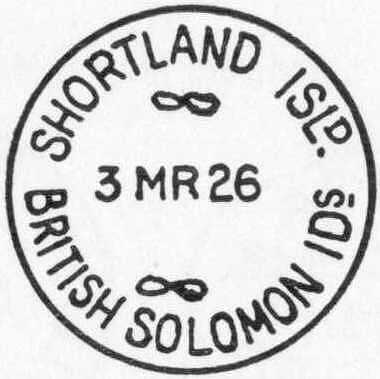
Diameter
= 27 mm
1926
to September 29, 1941
|
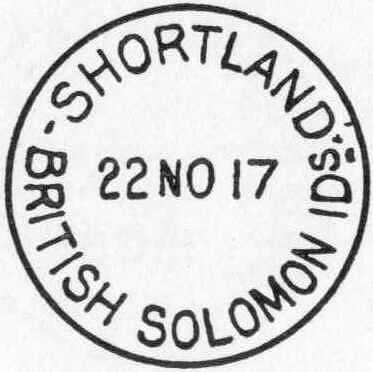
Diameter
= 27 mm
June
9, 1917 to 1931
|
|
|
|
|
|
|
The
Shortland Islands were ceded to Britain from Germany in 1899,
and are closer to Papua New Guinea than to the rest of the
Solomon Islands. The post office in the Shortlands opened in
July 1908.
In addition to the marks shown above, Vernon
lists another similar to the one shown in the center, but with
a four-digit year. Hinchcliffe
reports three registration labels and one handstamp for the
period of issue. Curiously, he also reports a manuscript mark
with the same date as the one listed for Gizo--September
5, 1921. |
|
|
|
|
|
|
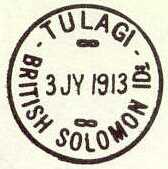
Diameter
= ~ 30 mm
Until
August 13, 1914
|
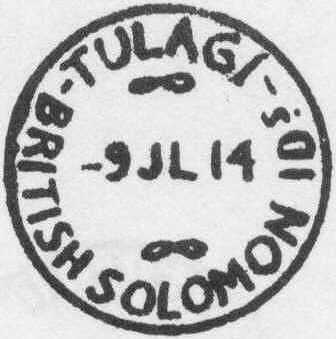
Diameter
= 27 mm
Until
October 9, 1928
|
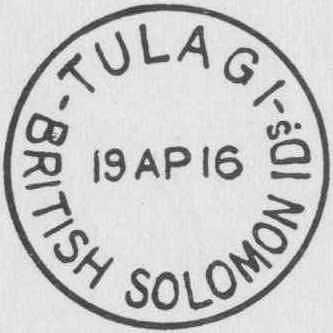
Diameter
= 27 mm
October
10, 1913 to
September
7, 1922 |
|
|
|
|
|
|
|
As described in Woodford
and the First Issue, Tulagi was the first capitol of
the Solomon Islands. It was also the center of the
postal system and the first post office in the
Protectorate.
Hinchcliffe
lists two registration labels and one handstamp used
during the period of issue. The handstamp includes
includes a red sequence number applied by a numbering
machine. Additionally, two postage paid handstamps are
reported used during this period. |
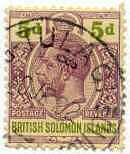
|
|
|
|
|
|
|
|
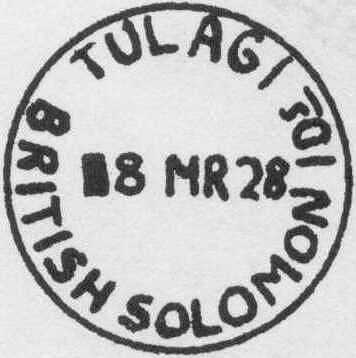
Diameter
= 29 mm
From
October 5, 1923
|
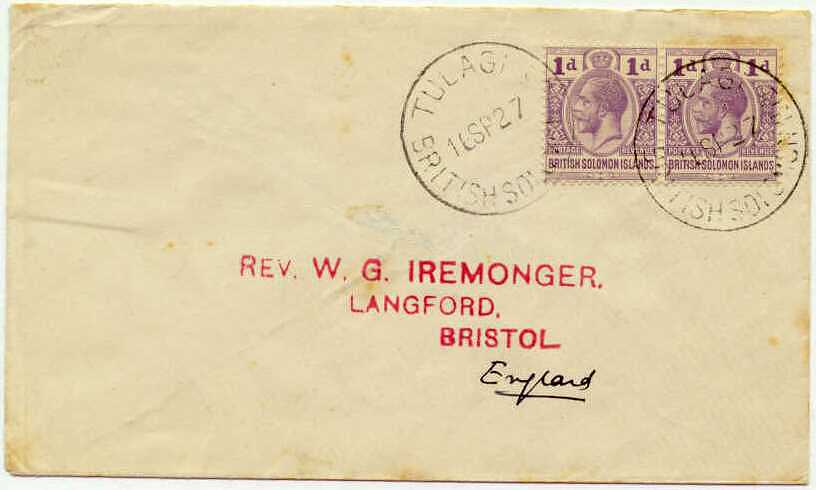
|
|
|
|
|
|
|
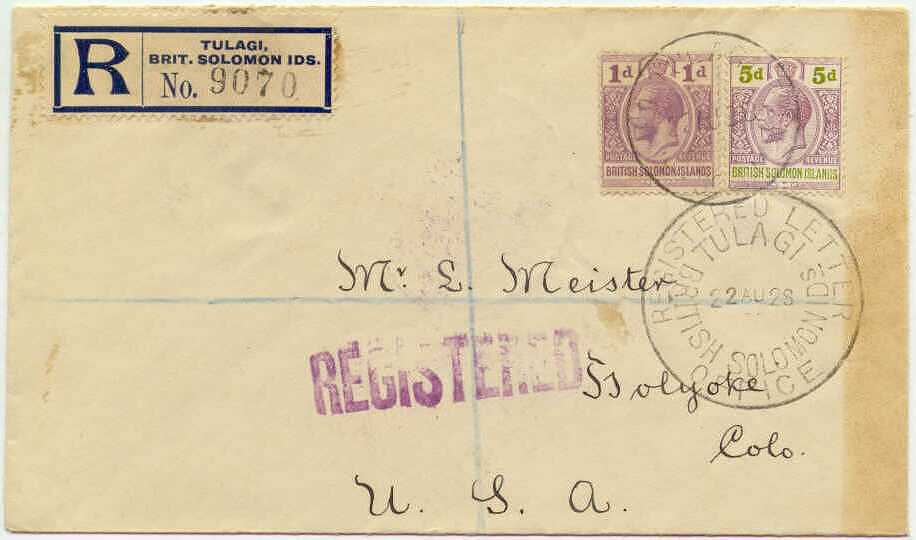 |

Diameter
= ~ 37 mm
From
January 21, 1928
|
|
|
|
|
|
|
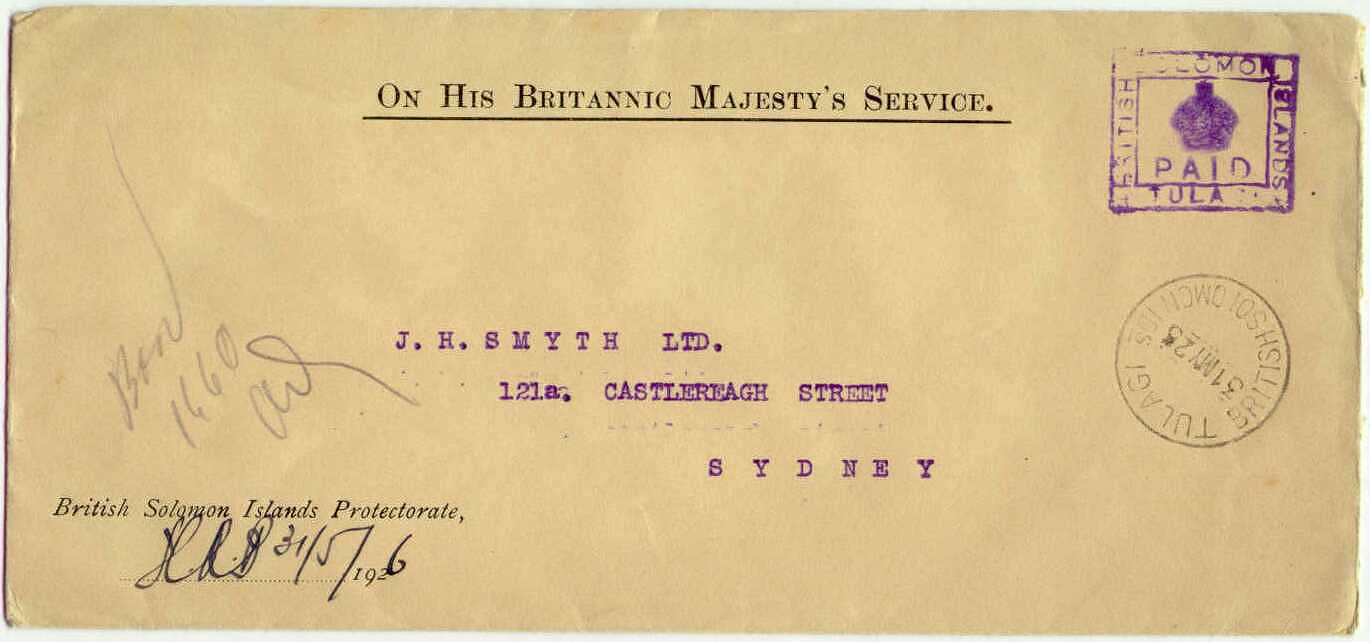 |
|
|
|
|
|
| Vanikoro, an island in the Santa
Cruz Group, opened its post office in Peu on the
southwest coast in 1924. The office served the company
that was established there to export kauri pine logs
which are now completely gone. Vanikoro is the site of Tinikula,
the active volcano pictured on the 2/- George VI
definitive of 1939, and the location of the La Perouse
disaster of 1788. |
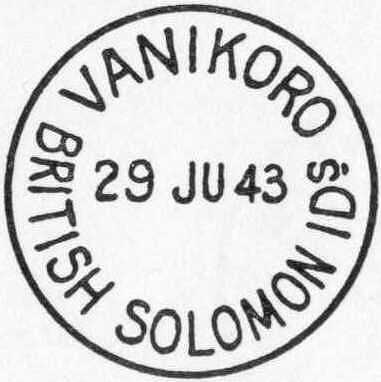
Diameter
= 30 mm
From
July 1, 1924
|
|
|
|
|
|
|
Your webmaster (Charlie Miller then...) has not yet been able to obtain
information on censor markings during World War I in the
Protectorate. It is not known whether the 1915 Tulagi cover
below was opened in the Solomons or at some intermediate
location. Any information supplied by visitors would be
greatly appreciated. |
|
|
|
|
|
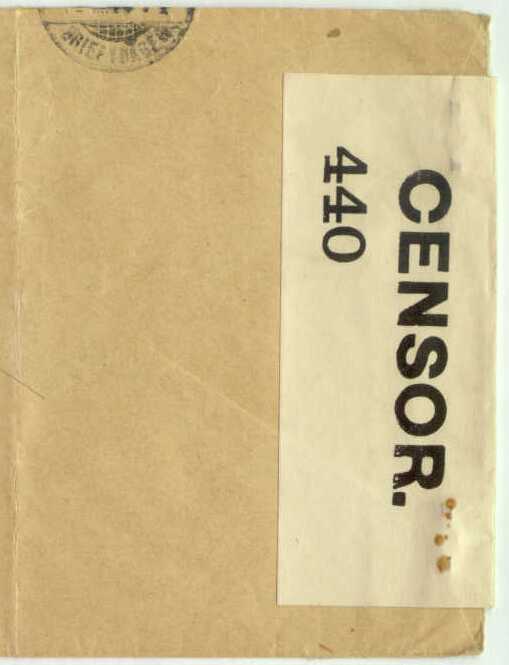
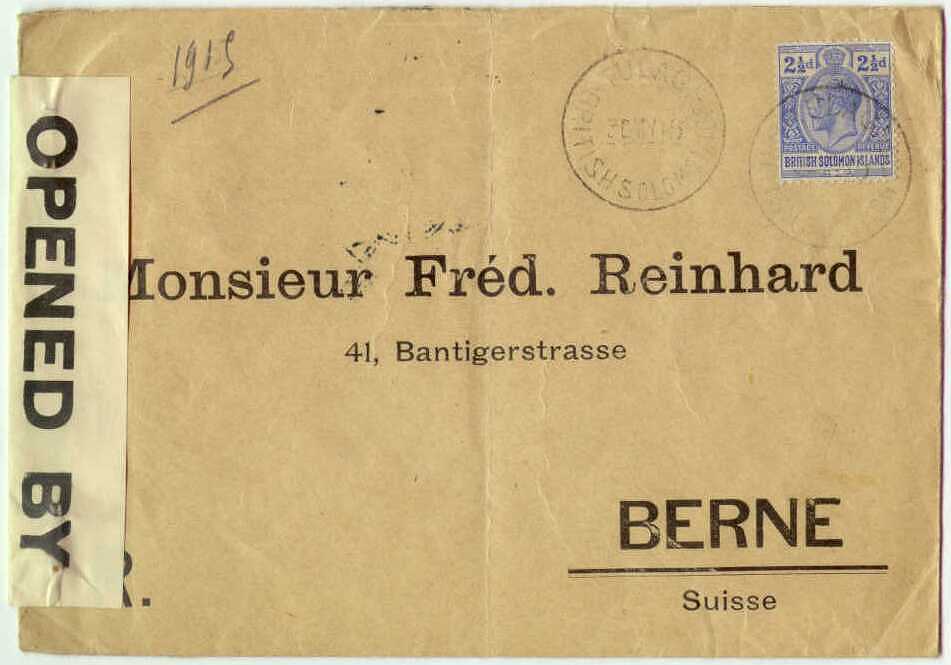 |
|
|

























